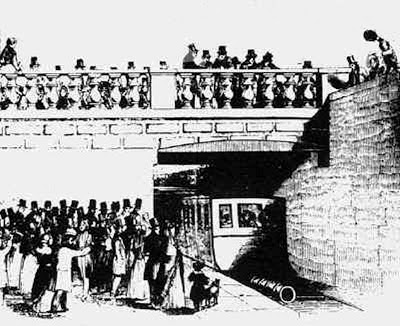In response to a recent blogpost in Cabaret Berlin about The Resi, a series of war veterans comment about their fond memories of the dancehall and their pneumatic encounters. One Army Lieutenant exchanged messages in 1956 which he still had in his possession - notes from table 448 to table 482 for example, between the Lieutenant and Blue Color, whom he danced with that night. Another visitor to the dancehall met a "beautiful German lady" who had sent him a note by the tube asking him to rescue her from a blind date.
Coincidentally I happened to be reading Ian McEwan's book The Innocent when I read this blogpost, which has a passage where the protagonist visits a nightclub in Berlin with other British servicemen. There is a wonderful scene which takes place in what I now realise is The Resi. Leonard has descended with a few others via a small lift into the then dark bar, with its grand unlit chandeliers and gilt-framed mirrors. Over Russian champagne, the story's protagonist reads a pamphlet attached to the menu, written in "clumsy print that swayed and danced". The pamphlet welcomed visitors to the Ballhouse of technical wonders, with "Modern Table-Phone-System" and "Pneumatic-Table-Mail-Service", posting "every night thousands of letters or little presents from one visitor to another" (pp 33-34). Soon Leonard receives a message of his own (pp35 -36):
As the mermaid shimmered to the front of the band and the cheers rung out there was a harsh rattling at their table as a canister shot down the tube and smacked against the brass fixture and lodge there. They stared at it and no one moved.
Then Glass picked it up and unscrewed the top. He took out a folded piece of paper and spread it out on the table. 'My God, ' he shouted, 'Leonard, it's for you.'
For one confused moment he thought it might be from his mother. He was owed a letter from England. And it was late, he thought, he hadn't said where he was going to be.
The three of them were leaning over the note. Their heads were blocking out the light. Russel read it aloud. 'An den jungen Mann mit der Blume in Haar.' To the young man with the flower in his hair. 'Mein Schoner, I have been watching you from my table. I would like it if you come and asked me to dance. But if you can't do this, I would be so happy if you would turn and smile in my direction. I am sorry to interfere, yours, table number 89'.Romance blossoms between the woman at table 89, Maria, and Leonard - later on they return to The Resi and drink Sekt to toast their first meeting - Maria wants to sit apart and send messages through the pneumatic tube, but there are no vacant tables. They have a second bottle of Sekt.
Built in 1908, The Resi was in its heyday in the 1920s. The venue closed in 1939 but was recreated in 1951, rohrpoststation and all - it is this recreation that Leonard visited. Sadly the building was closed and demolished in 1978.
Image from Cabaret Berlin. See also a great postcard from The Resi on the Buispost site.



































